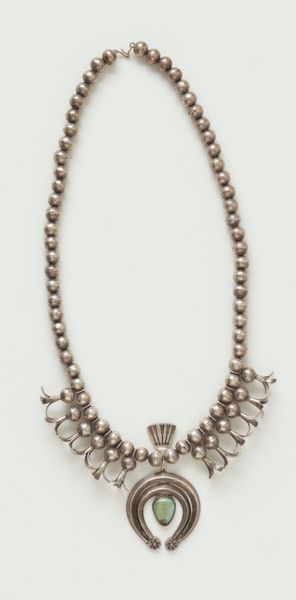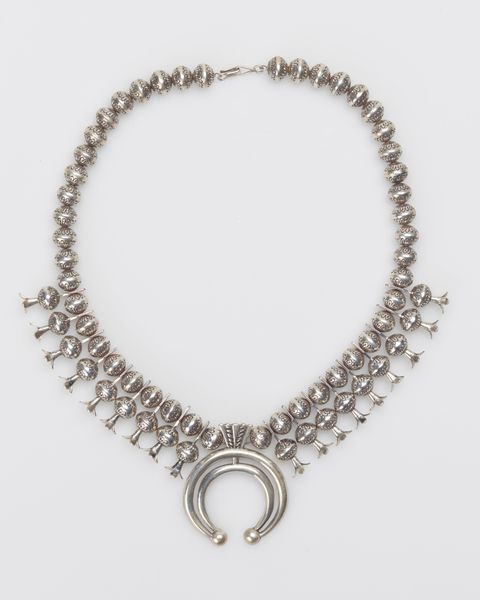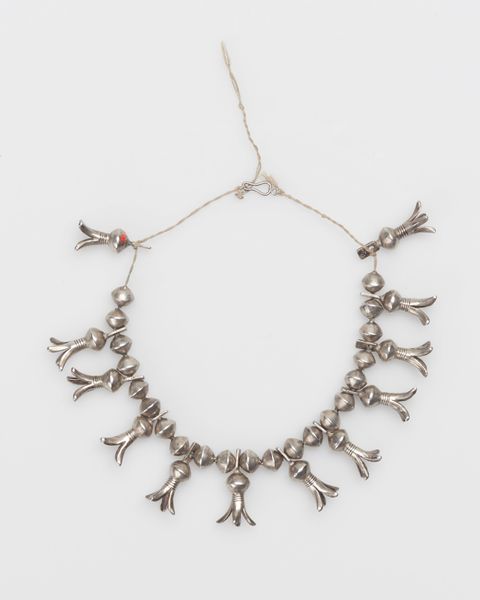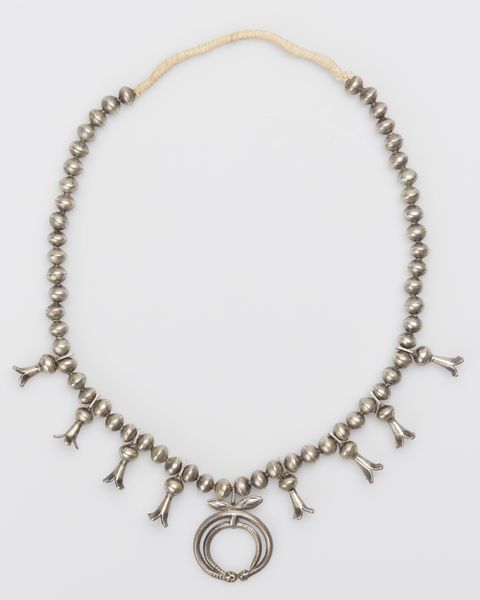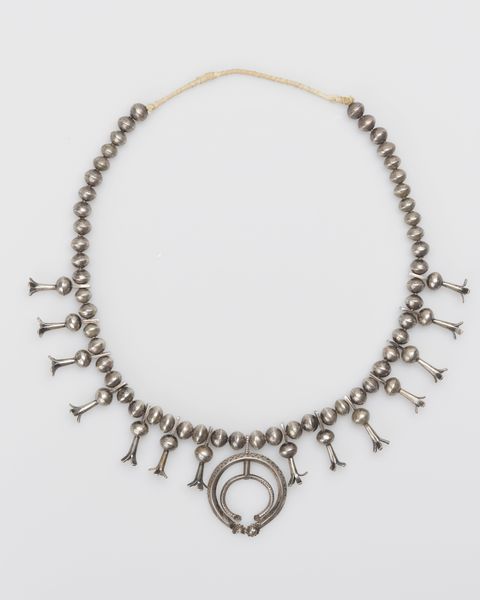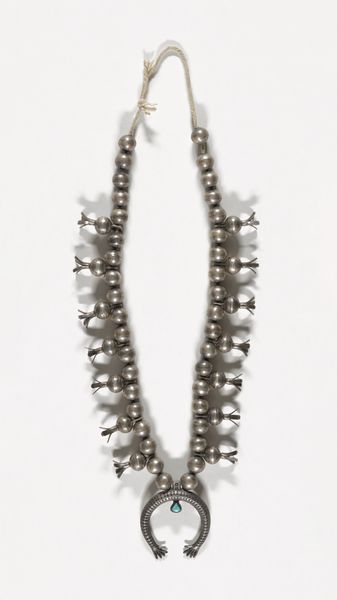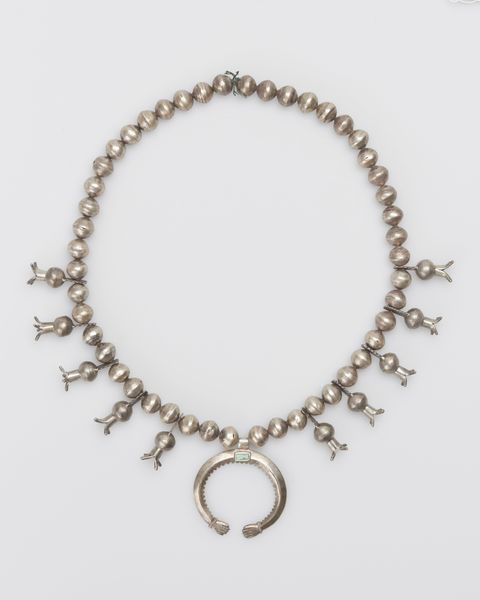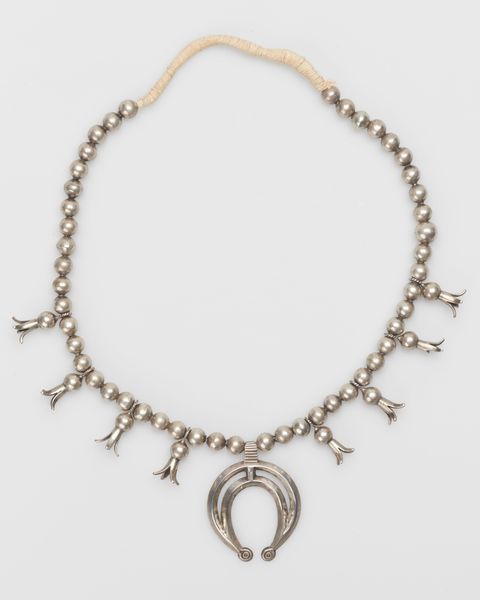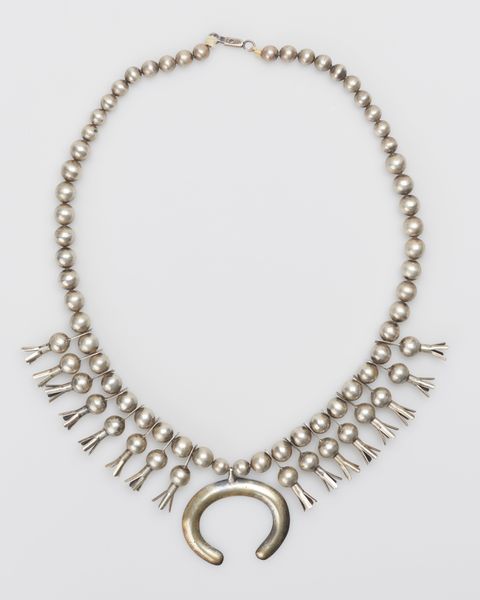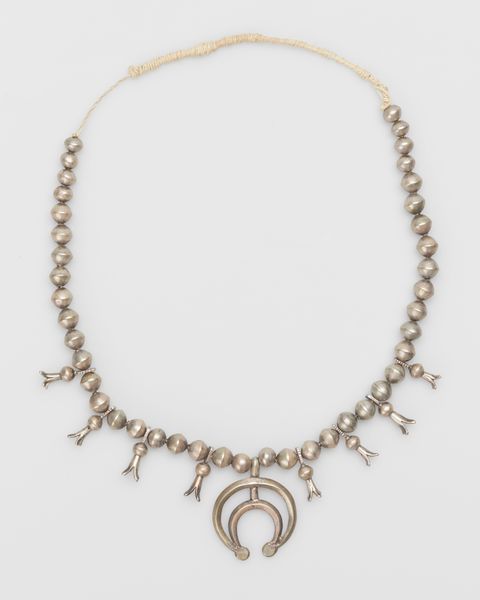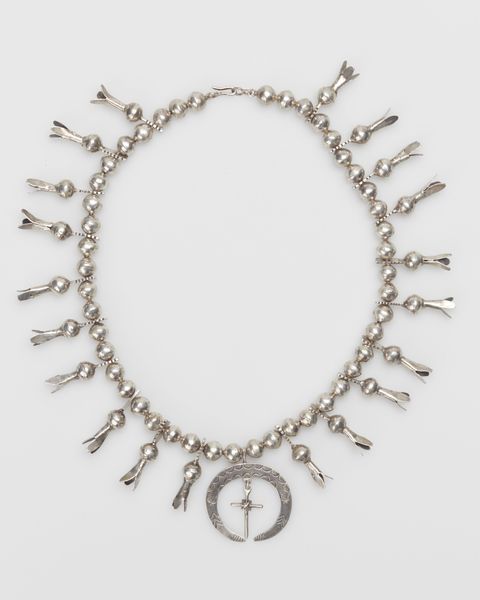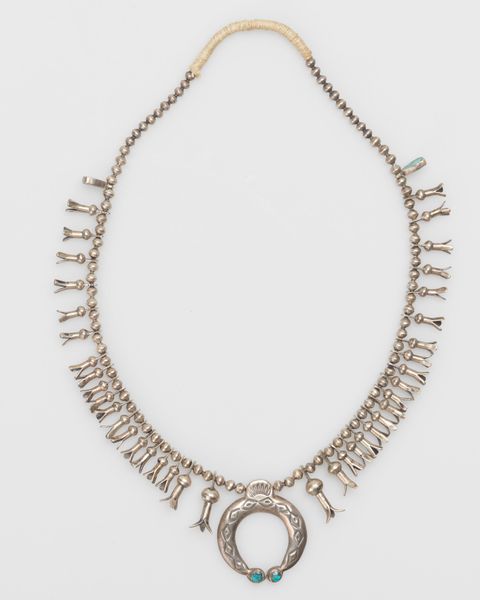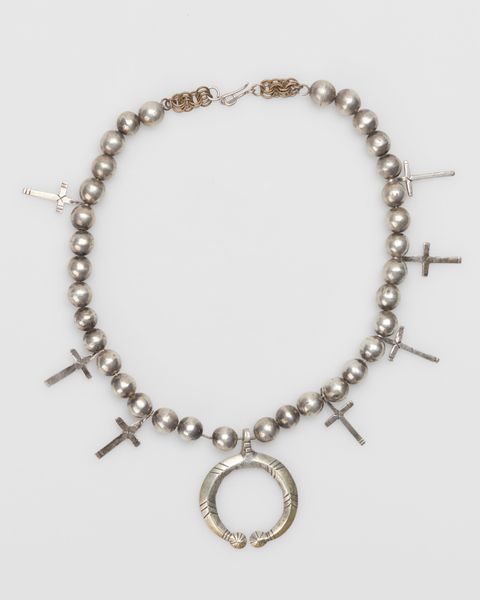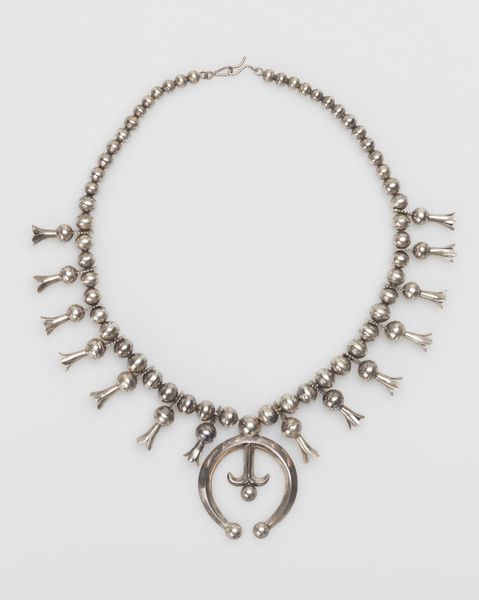
silver, metal
#
silver
#
metal
#
indigenous-americas
Copyright: Public Domain
Editor: Here we have a striking squash-blossom necklace created around the 1920s by a Navajo, or Diné, artist. It's fashioned from silver and what looks like turquoise accents. It's beautiful, but what stands out to me is how its creation reflects the complex history of Indigenous art; how do you interpret its creation and display? Curator: It's crucial to recognize the context. The Diné, among other Southwestern tribes, experienced increasing cultural appropriation and commodification of their craft in the early 20th century. This necklace, likely created for sale to non-Indigenous consumers, showcases the intersection of cultural preservation and economic necessity, especially in that era of federal Indian policy. Editor: So, even something seemingly beautiful can carry a more complicated narrative? Curator: Precisely. What was being produced, and how, were also responses to institutional pressures from trading posts, tourism, and museums. These necklaces became marketable representations of “Native American art,” but they were often shaped by outside expectations rather than solely intrinsic cultural values. Consider, who got to decide what "authentic" Native art should look like? Editor: That makes me think about how we, even now, are still shaping its story simply by how we choose to display it. Curator: Absolutely. The power dynamic inherent in how museums curate Indigenous art continues this historical narrative, perpetuating certain stories and silencing others. Should we exhibit such works as examples of resistance, adaptation, or a more ambivalent blend of the two? And whose voice takes precedence in that determination? Editor: I’d never thought about the ethics of displaying an object like this. So, seeing this piece as a beautiful adornment is only scratching the surface, then? Curator: Indeed. The squash-blossom necklace encapsulates the complicated negotiations between cultural identity, economic survival, and external perceptions that defined much of Indigenous artistic production in the 20th century and still echo today. Understanding its historical context is vital. Editor: Thanks for opening my eyes to the less-obvious context here! I will be more thoughtful about Indigenous representation in Decorative Arts.
Comments
No comments
Be the first to comment and join the conversation on the ultimate creative platform.
